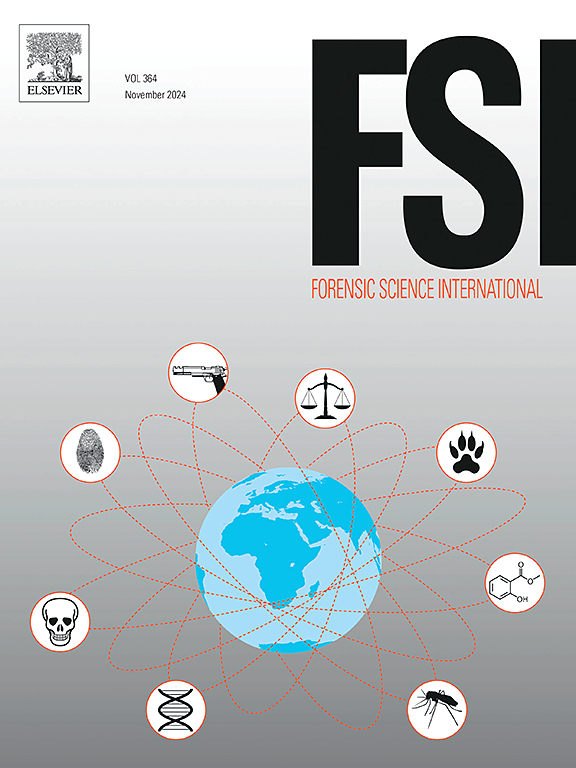The decomposition process in two restricted access environments in a temperate climate: Hard-covered suitcases and wheeled bins
IF 2.2
3区 医学
Q1 MEDICINE, LEGAL
引用次数: 0
Abstract
The succession, development, and behavior of necrophagous insects on decomposing remains are used by forensic entomologists to estimate the minimum post-mortem interval (minPMI). Carcasses are often recovered from concealed environments, such as burials, wrapping, suitcases and waste bins, where they are protected from abiotic and biotic factors, including carrion fauna. The present study represents the first comprehensive research on concealed environments in Australia. Stillborn piglets (Sus scrofa domesticus L.) placed in hard-covered suitcases (N = 40, restricted access) and wheeled bins (N = 20, partially restricted access) were compared with controls (N = 5, exposed) placed on the soil surface, over a period of 164 days (Austral winter to spring). The analysis compared the decomposition process patterns and considered the insect assemblages colonizing the carcasses in each concealment type and the controls. Results show that 1) insects were attracted to the control carcasses within hours of placement in the field (Day 1, D1), followed by wheeled bin carcasses (D3) and suitcase carcasses (D4); 2) carcasses reached skeletonization on D65 (exposed), D108 (wheeled bin) and D136 (suitcase); 3) the assemblages of necrophagous insect species were different between the exposed and the concealed carcasses; 4) blowflies (Diptera: Calliphoridae) were the most prevalent insects colonizing the controls and wheeled bins, while coffin flies (Diptera: Phoridae) were the most prevalent in the suitcases, with some colonized by black soldier flies (Diptera: Stratyiomiidae). The results of this research contribute to the understanding of decomposition processes and insect activity in restricted access environments and help provide a more accurate estimation of the minPMI in forensic cases.
求助全文
约1分钟内获得全文
求助全文
来源期刊

Forensic science international
医学-医学:法
CiteScore
5.00
自引率
9.10%
发文量
285
审稿时长
49 days
期刊介绍:
Forensic Science International is the flagship journal in the prestigious Forensic Science International family, publishing the most innovative, cutting-edge, and influential contributions across the forensic sciences. Fields include: forensic pathology and histochemistry, chemistry, biochemistry and toxicology, biology, serology, odontology, psychiatry, anthropology, digital forensics, the physical sciences, firearms, and document examination, as well as investigations of value to public health in its broadest sense, and the important marginal area where science and medicine interact with the law.
The journal publishes:
Case Reports
Commentaries
Letters to the Editor
Original Research Papers (Regular Papers)
Rapid Communications
Review Articles
Technical Notes.
 求助内容:
求助内容: 应助结果提醒方式:
应助结果提醒方式:


